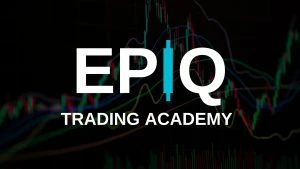When people talk about altcoin trading, many jump into “the next meme coin” or random low-cap gem, hoping for a home run. That’s high risk, and often a path to frustration.
A more disciplined approach is to trade and invest in altcoins by market capitalization tiers. This method uses cap as a filter and tool to manage risk, spot value, and structure portfolios more intelligently.
En este post, aprenderás:
- Why market cap tiers matter in altcoin trading
- The strengths and pitfalls of small/mid/large cap altcoins
- How to use market cap to build trading strategies
- Best practices and warnings
📊 Why Market Cap Matters in Altcoin Trading
Market cap isn’t just a vanity metric – it captures how much money the market has assigned to a project. When you break things down by cap, you can better understand:
- Liquidity & Slippage: Larger caps tend to have deeper order books. Small caps often suffer from thin liquidity and wide spreads.
- Volatility Profiles: Small caps can move more wildly (both up and down). Larger caps tend to be more stable relative to the rest.
- Risk vs. Reward: Small caps offer bigger upside but also much higher risk (rug pulls, project failure).
- Market Rotation Trends: Money often flows from large/mid into small caps during a bull run. Watching relative cap strength helps you spot rotation.
- Sostenibilidad: Projects with large market caps often have more community, adoption, infrastructure, and staying power.
In crypto right now, altcoin market cap (excluding BTC/ETH) is rising, and commentators suggest it could grow dramatically, some foresee a move from ~$1T to $5T in certain cycles. Cointelegraph
Also, tracking altcap vs total market cap helps you see whether capital is moving into speculative sectors.
🧭 Altcoin Market Cap Tiers & Their Characteristics
Let’s break altcoins into three broad cap tiers and what these tiers generally look like:
| Cap Tier | Typical Cap Range* | Traits / Advantages | Key Risks |
|---|---|---|---|
| Large-cap Alts | ~$10B+ | Better liquidity, stronger infrastructure, often first to gain in rotation | Slower gains relative to micro caps; already partly priced in upside |
| Mid-cap Alts | ~$500M to ~$10B | Sweet spot for balance of upside + risk, decent liquidity | Vulnerable to sentiment shifts, must select carefully |
| Small / Micro caps | <$500M (sometimes <$50M) | Wild upside potential, early discovery opportunities | High failure risk, low liquidity, susceptible to manipulation |
*These ranges are illustrative and change with overall market conditions.
When you see a mid-cap project with real traction (tech upgrades, adoption, partnerships) that’s still cheap relative to its peers, that’s often where you find high-reward opportunities without full gamble-level risk.
🚦 Using Market Cap to Filter Altcoin Trades
Here’s how to build a cap-aware screening process:
1. Set Your Cap Universe
Decide in which cap tier(s) you’ll play. For example, maybe you only trade mid and large alts, skipping micro caps completely.
2. Rank By Cap / Relative Strength
Within your universe, rank coins by market cap growth, price performance, and cap expansion vs competitors. A coin whose cap is growing faster than its peers is a strong signal.
3. Combine Cap with Fundamental Metrics
Cap alone is not enough — overlay on-chain metrics, adoption, community growth, developer activity, revenue/fees, tokenomics stability, etc.
4. Watch Rotation Into / Out Of Cap Tiers
- When large alts outperform, capital may be shifting away from micro/mid toward safer names.
- When small and mid go parabolic, it often signals broad speculative euphoria.
5. Use Cap-Based Exit Zones
If a coin moves from mid-cap into high-cap territory quickly, it might hit resistance from new expectations. That could be a good time to lighten or exit.
🛠 Strategy Ideas Based on Market Cap
Here are a few tactical strategies you can use with cap-based thinking:
A. Mid-Cap Momentum Plays
- Identify mid-cap alts breaking out after consolidation
- Use cap expansion (market cap growing faster than price or peers) as confirmation
- Ride until they reach logical resistance or “cap ceiling”
B. Cap Rotation Plays
- Monitor overall altcoin cap index (e.g. TOTAL3)
- When TOTAL3 breaks out while ETH/BTC consolidates, layer into mid/small alts immediately
- Pull back into larger alts or cash when rotation slows
C. Cap Break-In & Catch-Up Strategy
- Spot alts whose price is rising but market cap is still low relative to peers
- If fundamentals support it, expect catch-up runs — price might follow cap expansion
- Use smaller position sizing with stop-loss discipline
D. Large-Cap Safe Harbors
- In choppy or uncertain market phases, shift to larger alts for reduced volatility
- Use large alts as core positions, while smaller ones act as satellite plays
⚠️ Risks & Pitfalls When Trading Based on Market Cap
Cap-based trading helps, but it’s not a foolproof method. Watch out for:
- Fake liquidity or wash trading: Some small caps inflate volume and appear healthier than they really are.
- Cap dilution & token issuance: New tokens or inflation can penalize your position.
- Narrative-driven bubbles: Sudden hype can override fundamentals temporarily.
- Lagging metrics: Cap expansion sometimes builds slowly, so you may miss early moves if you wait too long.
- Overexposure to a single cap tier: If the market rotates away from your tier, your portfolio hits hard.
✅ How to Build a Risk-Managed Altcoin Portfolio Using Cap Tiers
Here’s a simple example:
- Core / Base Layer
Allocate 30-50% to large-cap alts you trust (liquidity, infrastructure). - Tactical Layer
Use 30-50% of remaining capital to trade mid-cap breakout or rotation plays. - Speculative Layer
Use a small fraction (5-15%) for high-potential micro-cap bets, but only if they pass your fundamental & cap filters. - Exit & Rotation Plan
Predefine when you’ll exit or rotate based on cap growth, sentiment, or signs of rotational fatigue.
🧠 Reflexiones finales
Trading altcoins based on market cap gives you structure in a chaotic space. It helps filter noise, manage risk, and spot rotation before it becomes obvious.
If you combine cap tiers with fundamentals, volume, adoption metrics, and proper risk management, your success rate improves significantly.
Altcoins aren’t all wild bets — with cap-aware strategy, they can become methodical opportunities instead of gambling.
Trade Altcoins Smarter with EPIQ
En Parqué EPIQ, we help altcoin traders filter and trade smarter using market cap frameworks:
- ✅ Live dashboards ranking altcoins by cap growth, liquidity, and relative strength
- ✅ Rotation alerts when TOTAL3 or alt caps start surging
- ✅ Training on cap-tier strategies and portfolio construction
- ✅ A community that tracks cap-driven alt moves together
👉 Empieza tu Prueba gratuita de 3 días and let market cap become your edge — not just hype.
Asesoramiento no financiero (NFA): This content is for educational purposes only and not financial advice. Always do your own research and manage your risk responsibly.










Respuestas